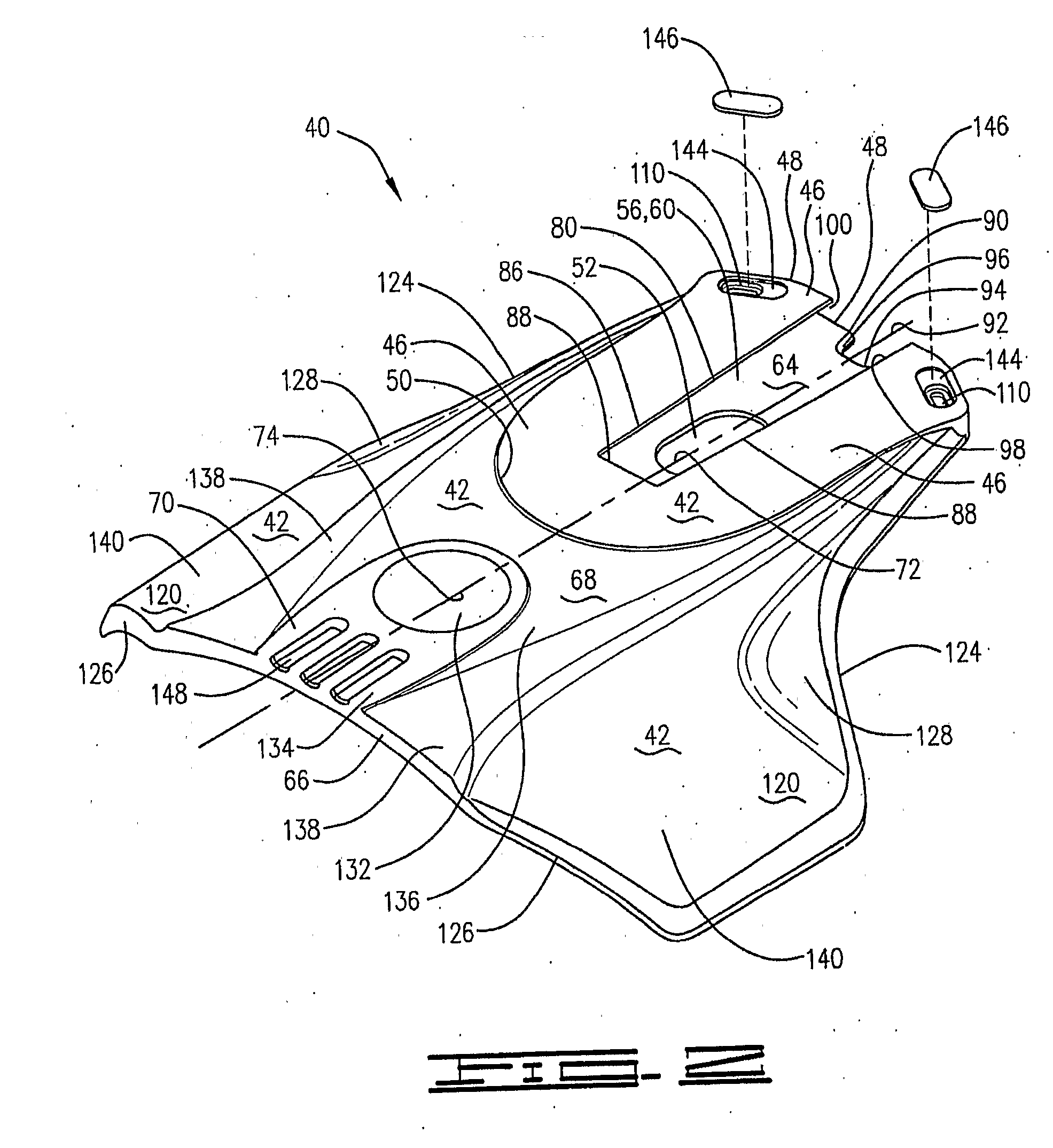Boat Stabilizer, Boat Motor and Related Method
a technology for stabilizers and boats, applied in the field of boat stabilizers, can solve the problems of creating unnecessary drag, difficulty in drilling holes in the precise location needed, and permanent modification of the structure of the lower drive uni
- Summary
- Abstract
- Description
- Claims
- Application Information
AI Technical Summary
Benefits of technology
Problems solved by technology
Method used
Image
Examples
Embodiment Construction
[0043]Referring now to the drawings, and particularly to FIG. 1, a boat motor suitable for use in connection with the present invention is illustrated and generally designated by the numeral 10. The boat motor 10 includes an engine 12 (illustrated with the engine cover or housing attached to the engine) and a lower drive unit 14 attached thereto. Although the boat motor 10 shown in FIG. 1 is an outboard motor, other types of motors including motors having stern drive units can also be used in association with the present invention. For example, with respect to the present invention, the lower drive unit 14 is the same regardless of whether the boat motor 10 is an outboard or a stern drive.
[0044]As shown by FIG. 1, the lower drive unit 14 includes a propeller 16 including a propeller hub 18 and a plurality of blades 20. A skeg 22 is attached to the lower drive unit 14 and extends below the propeller 16. An anti-cavitation plate 24 is also attached to the lower drive unit 14 and is di...
PUM
| Property | Measurement | Unit |
|---|---|---|
| Length | aaaaa | aaaaa |
| Length | aaaaa | aaaaa |
| Length | aaaaa | aaaaa |
Abstract
Description
Claims
Application Information
 Login to View More
Login to View More - R&D
- Intellectual Property
- Life Sciences
- Materials
- Tech Scout
- Unparalleled Data Quality
- Higher Quality Content
- 60% Fewer Hallucinations
Browse by: Latest US Patents, China's latest patents, Technical Efficacy Thesaurus, Application Domain, Technology Topic, Popular Technical Reports.
© 2025 PatSnap. All rights reserved.Legal|Privacy policy|Modern Slavery Act Transparency Statement|Sitemap|About US| Contact US: help@patsnap.com



